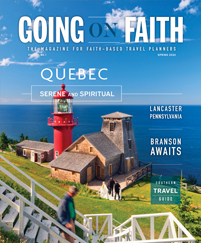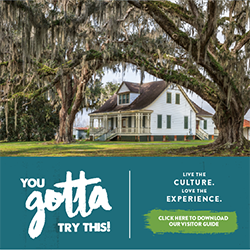Where in the bible?
Acts 18, I and II Corinthians
from Ancient Tentmaking to Modern Industry
The footsteps of Paul — and the spread of the Gospel — lead through Corinth, a Greek coastal city that is an ideal destination for faith-based groups and other travelers who enjoy Greek history, food and culture.
When the apostle Paul arrived in Corinth on his second missionary journey, he found a bustling center of trade, perfect for spreading the Gospel to others living around the world. Acts 18 says that Paul lived and worked in Corinth for 18 months as a tent-maker alongside Aquila and Priscilla while preaching and establishing a congregation of believers, before the three of them continued on to Ephesus.
Located on the Peloponnesian Peninsula, the modern coastal city of Corinth was built after an earthquake destroyed the original city in 1858. The city is close to the Greek capital of Athens and at the entrance to the southern region of Greece. For this reason, groups visiting Corinth can have the comfort of staying in one destination and still experience the different regions of the country. The bridges that span the canal provide stunning views of the surrounding area and the many ships that cross through the isthmus.
Visitors who venture outside the city will see many vineyards growing grapes and olives, as well as citrus orchards. The regional cuisine is bright and flavorful, featuring local produce and the honey and fresh herbs that are also common to the area.
Top Attractions for Church Groups
• Ancient Korinthos — Located about five miles north of the modern-day city, the archaeological site of Ancient Korinthos has a museum that details the history of the ancient city, with relics unearthed in the excavations. Among the ruins are the Roman forum, a basilica and baths; the Temple of Apollo; and the agora, or city center, which included the market where Paul, Aquila and Priscilla likely sold their wares.
• Perivolakia Square — This park is a great stop for a snack, some shopping or sightseeing. The area has multiple coffee shops and boutiques, and across the street are the city’s courthouse and a statue of Archbishop Damascenus Papaudreou of Greece, an important figure in 20th-century Greek history.
• Historical and Folklore Museum — This museum highlights Greek heritage and culture. On display at the museum are many traditional Greek costumes from the 18th and 19th centuries, as well as samples of ancient embroidery, jewelry and tools.
• El. Venizelos Square and the Seaside Zone — This area is home to the Pegasus statue, a popular symbol of Corinth. This area is most famous for the small port of Floisvos and the marina, which is known for its many high-end shops and yachts. Also close to this area is the Kalamia, a picturesque, pebble-strewn beach that features many coffee shops and taverns.
• Acrocorinth — Just south of the city of Corinth, this peak has served as the fortified acropolis of Corinth for hundreds of years. The Acrocorinth is home to the oldest and largest castle on the Peloponnesian Peninsula, dating from the Middle Ages, and to the Temple of Aphrodite from the Greek period. Other ruins include Christian churches and buildings dating from the Ottoman era. In addition to these historical features, the Acrocorinth is home to an expansive botanical garden that features many wildflowers indigenous to the region. The botanical garden is part of the Natura 2000 European Union habitat network, a larger conservation effort to preserve species unique to the European continent.
Must Have Experiences in Corinth
Must-Do: An annual grape festival each September celebrates the harvest and winemaking tradition of the Corinth area.
Must-Taste: Portokalopita is a type of sweet cake made with oranges. One variation includes semolina flour and Greek yogurt to produce a moist sweet cake; others include shredded filo pastry for a bit of crunch (Get the recipe here). Common ingredients in the area around Corinth include seafood, goat’s milk cheeses, Greek-style yogurt, olives and fresh herbs.
Bring it Home: Popular Corinthian souvenirs include local honey, olive oil and hard-to-find spices such as saffron or the spices mastic and mahleb used in authentic Greek Easter bread. A popular non-food item with Greeks and non-Greeks alike is komboloi beads, or “worry beads.” You’ll see many locals walking around “worrying” or toying with their beads, which come in all colors and designs imaginable.
Photo Op: Many visitors stop for photos atop one of the bridges spanning the Corinthian Canal. Others take snapshots of the column ruins of the Temple of Aphrodite that sits on the highest point of the Acrocorinth.
For more information go to www.visitgreece.gr









